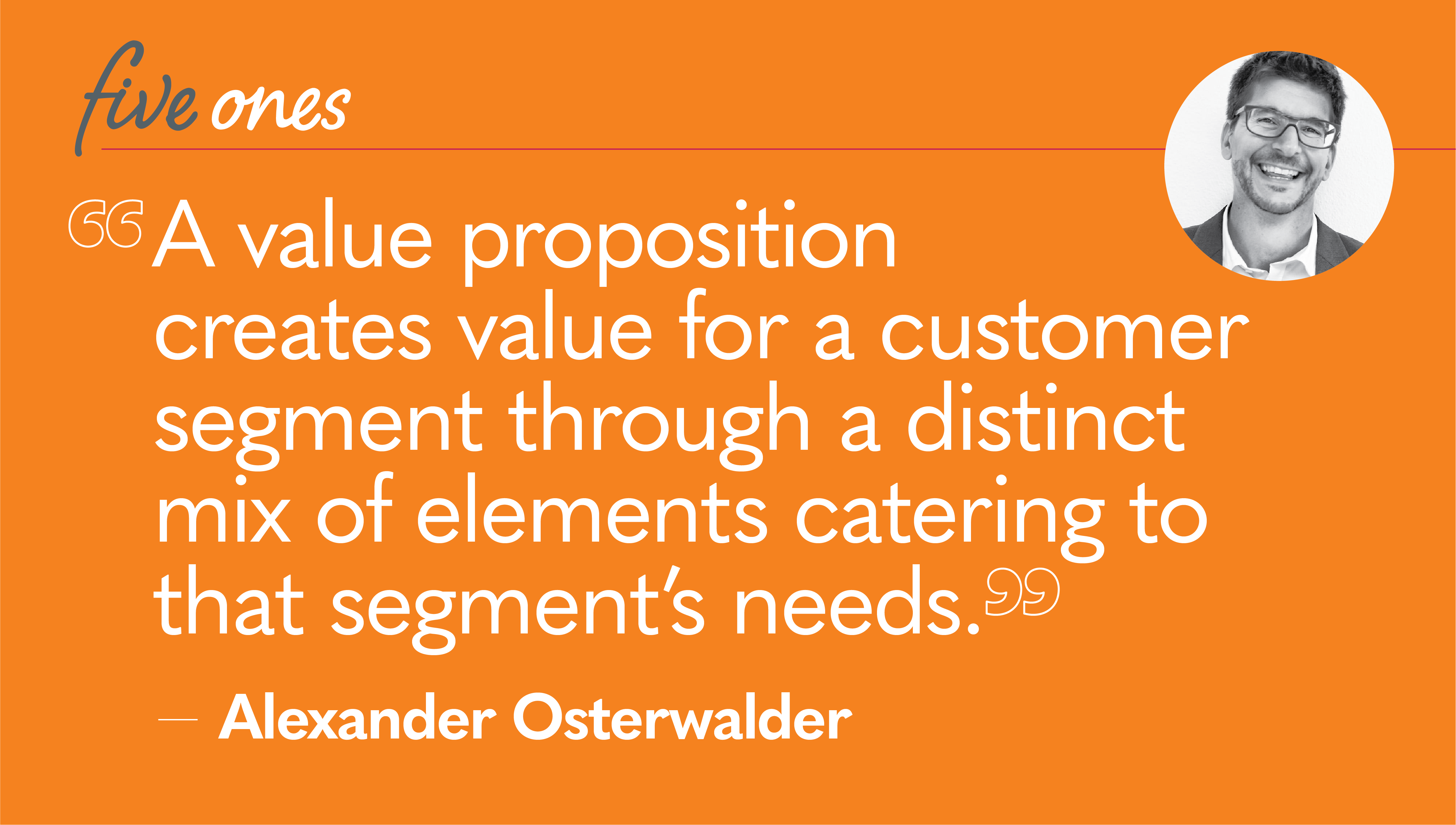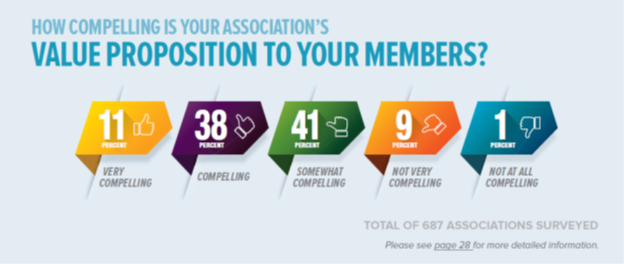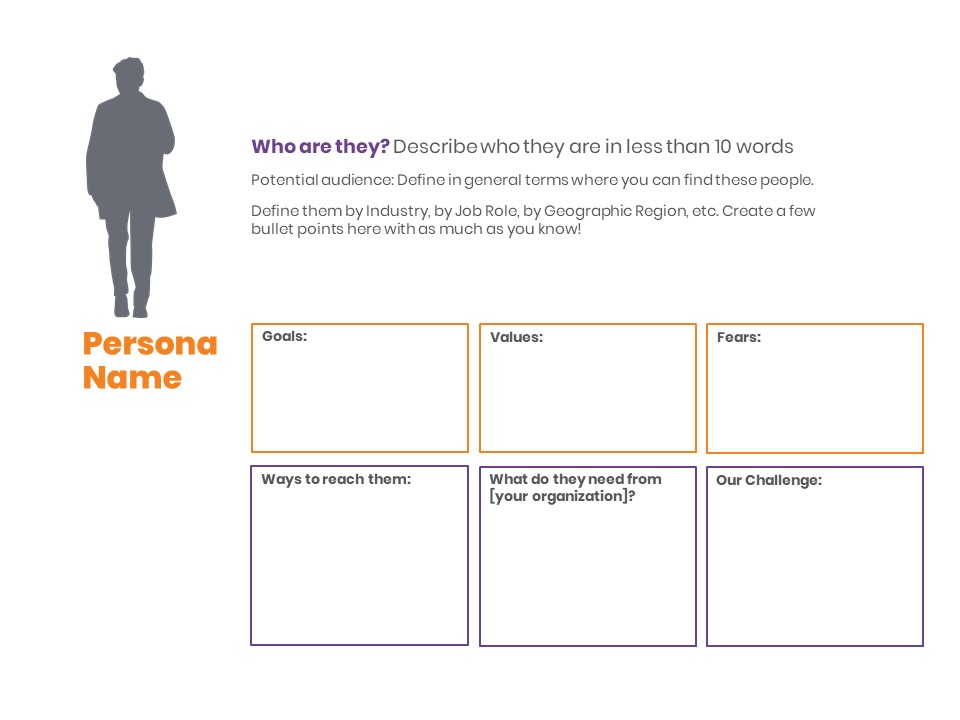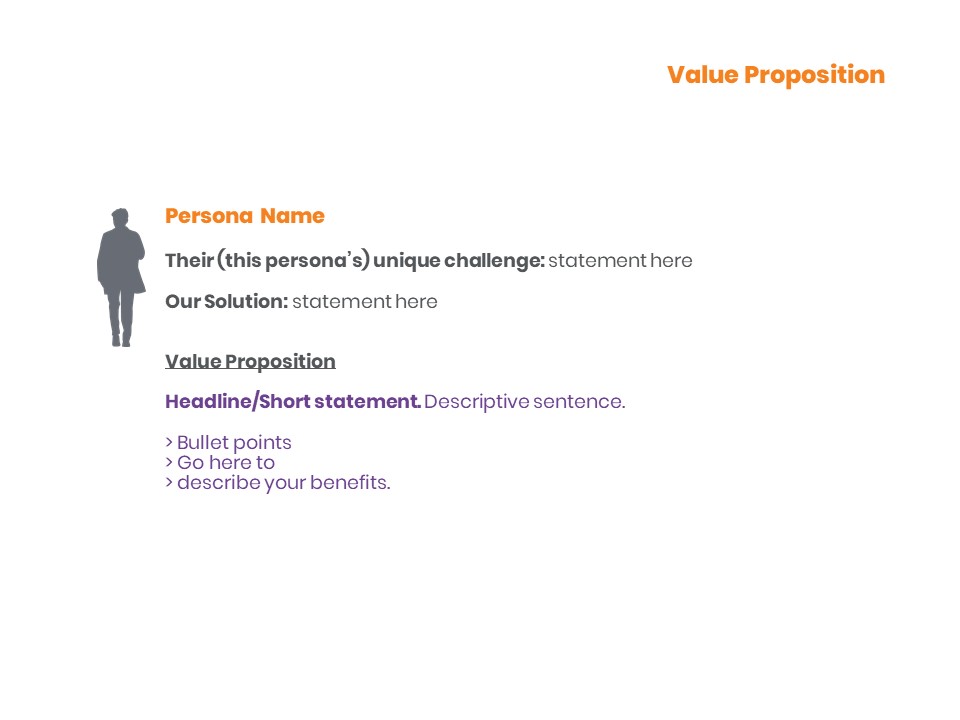
Membership Growth Hacking: Creating Value Propositions
Growing and retaining the membership base for your association is essential to keeping your organization vital. But it can be challenging, even in the best of times. In fact, 68% of organizations have difficulty growing membership, according to the Wild Apricot 2020 Membership Growth Report. Creating a membership value proposition (MVP) to convey your value to existing and prospective members properly will make all.the.difference in your marketing efforts. You’ll find your MVP will permeate all of your marketing efforts and (bonus) will keep your efforts consistent.
According to Marketing General’s Membership Marketing Report, “associations reporting increases in their one-year and five-year membership numbers (59% and 57%, respectively), as well as increases in their new members and their overall membership renewal rates, are significantly more likely to report that their value proposition is very compelling or compelling.”

To further back up this point, Community Brands’ 2020 Industry Study: From Disruption to Opportunity found that when asked which sources members were most likely to use for various needs, member responses suggest they see their professional organization as a trusted source for professional education, training, network, and community.
- 74% go to associations for a professional community, over LinkedIn/Facebook, Chamber of Commerce or social club
- 60% go to associations for networking, over ALL social networks
- 49% go to associations for education and training, over their employer, a college/University, Google sources, or LinkedIn.
To me, this is the most powerful evidence that associations have a built-in gold mine, they just need to position it and communicate it well!
Emphasize Benefits over Features
These two terms are often confused when planning out your membership value proposition. It’s essential to understand the difference and convey the distinction to potential and existing members.
- A feature is something that is a component of a product or service. When you mention a feature, the prospect is on their own to figure out how they will benefit from that feature.
- A benefit is something that concisely conveys to a prospect the value they will receive. It answers the most important question someone asks before parting with their money: “What’s in it for me?”
For example, let’s use an easy example, a product like an insulated portable mug. A feature such as food-grade stainless steel construction tells the customer they benefit because it is strong and durable. Another feature may be that it is dual-walled and vacuum-insulated, which lets a customer know that it can keep the beverage’s temperature consistent for a longer time. The same thinking must be applied to membership marketing strategies so that there is much more emphasis placed upon the benefits and less upon the features.
So, instead of saying “Opportunities to network with your peers at events (feature),” rephrase it to say something like “Solidify existing relationships and find new connections (benefit) at networking events (feature).” Likewise, “Improve upon your existing skill sets (benefit) with our innovative continuing education webinars (feature)” puts the benefits at the forefront of the prospect’s mind. The goal is to remove all doubt that there are benefits to be found within membership features.
Talking about benefits, I also like to think of a value proposition as The Wider Funnel explains.
“Your value proposition is a cost vs. benefits formula that is evaluated subconsciously and automatically in your prospect’s mind when they encounter your marketing touchpoint.
Think of it as an equation, balancing the perceived benefits and perceived cost of transacting with your brand.”
Motivation to join = perceived benefits – costs
Their equation says that if a member’s perception of the benefits they get through membership in your organization outweighs the perceived costs, they will be motivated to join/renew. This is another good point when thinking about when creating your MVP. The language you use should put your benefits on a “pedestal” to diminish the perception of cost.
Know Your Audience
While social media is an excellent way to market to the masses, one of the most prominent mistakes organizations can make is failing to target their marketing efforts to the correct people, especially prospective members (since you already have a direct line to your current members). It’s not going to help your organization much if you’re marketing membership to people who have no interest in the area. To avoid costly wasted effort, your organization must define the personas that will take advantage of your membership value proposition.
To help you define the personas of your ideal members, start with the basics. Identify common factors among current members. Some of these factors may include age, location, career industry/role, shared values, and everyday challenges. If you believe you should dig deeper to find more data points, it may be advantageous to send out surveys to members. You could even get in touch with non-members to not only gain insight but also make them aware of your existence.
I recently worked with an organization interested in creating value propositions to help solidify their marketing but hadn’t yet wholly identified all their potential member groups. So, the first thing is to identify your audience. You can group them in any way that works best for you. It could be based on job title or years of experience or buying power, age, or where they live. Next, prioritize and get to know them. Which group is tailor-made for your best offerings? Where would you have the strongest value proposition? Then, you need to create a profile about them. Typically, this can be done through interviews or surveys and directly asking for the information. But, if you don’t have the time or resources to make this happen, you can still put together what you know. Below is a very basic persona template that you could create based on first-hand knowledge and some assumptions.

Before you move to the next step of creating the value proposition, you also need to research your competitors. What is exclusive about your organization? What angle do your competitors use for their value proposition? What are the similarities and differences? You want to create something unique, so knowing this is very important!
A formula for your Value Proposition
Like features and benefits, value propositions often get confused with:
- Tagline
- Positioning statement
- Your mission/vision
- Product description
These are NOT your value propositions, but certainly supply good input to your final language.
When crafting your value proposition for each persona, each should contain three key elements to entice prospective members into joining:
- A headline that captures attention with one main idea (think a short statement)
- A descriptive sentence that backs up your headline (another short statement)
- A short list or paragraph that further explains what you offer (2-4 statements total)
The headline is what I consider the heart of your value proposition. It should be the language used by every internal stakeholder about what you offer to your members. When thinking about putting together a headline that packs a punch, The Member Guide has a great starter:
“Where were we the first? When are we the only? How are we the best?”

Those three elements put you on a great path to emphasizing how important your organization is to current and prospective members. Still, there is a bit of art that goes into choosing the right content to find and captivate the perfect audience.
All of these concepts are summarized in the following slides:
Impact and Emotion
Above all else, work hard to let members know that you deeply value them and the relationships formed within the organization. In everything you do, the focus should be on speaking directly to each member, not just the organization as a whole. Humans are emotional; organizations are logical. Understand the emotions that your members and prospects experience when they think about the topic your organization stands for. By understanding those emotions, you will find that defining your membership value proposition will be much easier.
Just remember that you don’t have to go about the process all alone. Five Ones has the expertise to help guide you through some of the trickiest parts of determining your MVP. Connect with us today to find out how!



